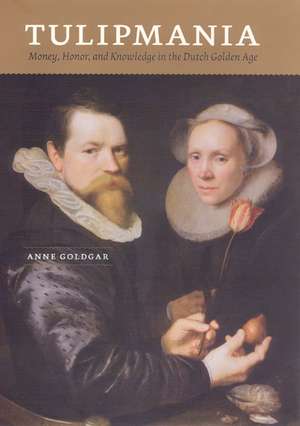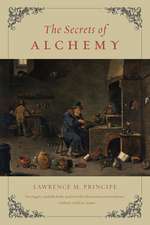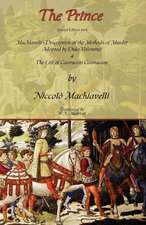Tulipmania: Money, Honor, and Knowledge in the Dutch Golden Age
Autor Anne Goldgaren Limba Engleză Paperback – 15 sep 2008
In the 1630s the Netherlands was gripped by tulipmania: a speculative fever unprecedented in scale and, as popular history would have it, folly. We all know the outline of the story—how otherwise sensible merchants, nobles, and artisans spent all they had (and much that they didn’t) on tulip bulbs. We have heard how these bulbs changed hands hundreds of times in a single day, and how some bulbs, sold and resold for thousands of guilders, never even existed. Tulipmania is seen as an example of the gullibility of crowds and the dangers of financial speculation.
But it wasn’t like that. As Anne Goldgar reveals in Tulipmania, not one of these stories is true. Making use of extensive archival research, she lays waste to the legends, revealing that while the 1630s did see a speculative bubble in tulip prices, neither the height of the bubble nor its bursting were anywhere near as dramatic as we tend to think. By clearing away the accumulated myths, Goldgar is able to show us instead the far more interesting reality: the ways in which tulipmania reflected deep anxieties about the transformation of Dutch society in the Golden Age.
“Goldgar tells us at the start of her excellent debunking book: ‘Most of what we have heard of [tulipmania] is not true.’. . . She tells a new story.”—Simon Kuper, Financial Times
“Goldgar tells us at the start of her excellent debunking book: ‘Most of what we have heard of [tulipmania] is not true.’. . . She tells a new story.”—Simon Kuper, Financial Times
Preț: 210.08 lei
Nou
Puncte Express: 315
Preț estimativ în valută:
40.21€ • 43.69$ • 33.80£
40.21€ • 43.69$ • 33.80£
Carte disponibilă
Livrare economică 31 martie-14 aprilie
Livrare express 14-20 martie pentru 34.06 lei
Preluare comenzi: 021 569.72.76
Specificații
ISBN-13: 9780226301266
ISBN-10: 0226301265
Pagini: 446
Ilustrații: 13 color plates, 69 halftones, 3 line drawings
Dimensiuni: 152 x 229 x 33 mm
Greutate: 0.63 kg
Editura: University of Chicago Press
Colecția University of Chicago Press
ISBN-10: 0226301265
Pagini: 446
Ilustrații: 13 color plates, 69 halftones, 3 line drawings
Dimensiuni: 152 x 229 x 33 mm
Greutate: 0.63 kg
Editura: University of Chicago Press
Colecția University of Chicago Press
Notă biografică
Anne Goldgar is reader in early modern history at King’s College, London. She is the author of Impolite Learning: Conduct and Community in the Republic of Letters, 1680–1750.
Cuprins
Acknowledgments
List of Illustrations
Introduction
One: Something Strange
Two: Art & Flowers
Three: Bloemisten
Four: Grieving Money
Five: Bad Faith
Epilogue: Cabbage Fever
Glossary
A Note on Money
Abbreviations
Notes
Index
List of Illustrations
Introduction
One: Something Strange
Two: Art & Flowers
Three: Bloemisten
Four: Grieving Money
Five: Bad Faith
Epilogue: Cabbage Fever
Glossary
A Note on Money
Abbreviations
Notes
Index
Recenzii
“Tulipmania is in every way a model of historical scholarship, an exemplary piece of historical craftsmanship. Every page is rife with rich human detail, and Goldgar’s lively and elegant style carries the reader, enthusiasm and curiosity undimmed, to the stimulating conclusion. Above all, this is revisionist history of the best kind.”
“Anne Goldgar’s scholarly sleuthing gives a whole new look to the 1630s tulipmania in the Netherlands.The bulb buyers and sellers were good middle-class merchants, not so far removed from knowledgeable connoisseurs and art-lovers. The crash in prices undermined not the economy, but people's confidence in honor and good judgment. Delightfully written, Tulipmania turns the exaggerations of a media event into an exploration of early modern values and anxieties.”
"This is wonderful book, beautifully written and sustained by archival scholarship of the highest order. Its devastating and original demolition of the myth of Tulip mania, the fineness of historical judgment and the painstaking reconstructions so effortlessly conveyed on the page make it a pleasure to read."
“Anne Goldgar’s scholarly sleuthing gives a whole new look to the 1630s tulipmania in the Netherlands.The bulb buyers and sellers were good middle-class merchants, not so far removed from knowledgeable connoisseurs and art-lovers. The crash in prices undermined not the economy, but people's confidence in honor and good judgment. Delightfully written, Tulipmania turns the exaggerations of a media event into an exploration of early modern values and anxieties.”
"A standard reference for all historians whenever they deal with this episode in Dutch financial history."
"What Anne Goldgar does in her provocative and lively new book is convincingly cast all of these existing narratives into questions. Drawing on extensive research in a wide range of archives . . . she shows that the tulip boom, far from representing a case of mass irrationality, was actually the product of intellectual, familial, and commercial networks among a relatively small and prosperous subset of Dutch burghers. . . . [The book] serves not only to rewrite a fascinating historical event, but to shed considerable light on the history or early modern commerce and culture more generally."
"A brilliant young spoilsport of a historian . . . decided to examine the evidence rather than buy the legend. . . . This book is a gem. Elegantly and lucidly written, it debunks the myth of tulipmania once and for all."
"In my view it is a wonderful and delightfully written book offering a totally new slant on the tulipmania in the Netherlands in the 1630s, when the bottom dropped out of the tulip bulb market in just a few days’ time."
"A meticulously researched study of the phenomenon that challenges all of the previously held ideas about the extent of this bubble. There can be no doubt that this well-written and engaging book will become the standard reference on the topic for years to come."
"Goldgar's book establishes a new benchmark--the first since 1637--for interpretations of the tulip mania. It largely fulfills its ambitious interdisciplinary agenda, bringing to life the world of the seventeenth-century floristes."
"As Anne Goldgar gently informs us in the beginning of her absorbing book, most of what we 'know' about tulip mania is pure fiction."
2009 Leo Gershoy Prize from the American Historical Association
"Goldgar persuasively demolishes most of the myths and exaggerations surrounding this affair. . . . [She] treats it as a microhistorical lens through which we can learn much about the society and culture of the young Dutch Republic. . . . Cultural history at its best."
"Goldgar's research can hardly be bettered. . . . [The] book is the most authioritative study on the subject and it will be the statutory starting point for fresh research."
"Goldgar's examination of the role of value and the new ways social status, trust, and expertise interacted in judgments concerning value in a mercantile culture should have important repercussions for the history of science, art, economic thought, social history, and studies of the emerging public sphere."
"Goldgar's book is much more than just a deconstruction of popular myth in history; it is a magnificent reconstruction of the mentality of the upper middle class in the Dutch Republic. . . . A fascinating and indeed convincing reconstruction of the tulip craze. It is well-researched, beautifully written and splendidly produced."
"Anne Goldgar's detailed analysis of vast archival material brings anew picture of tulipmania to the surface by reconstructing the events as if you were looking through a microscope. It reveals the myth of tulipmania, which was soon created after tulipmania itself."














